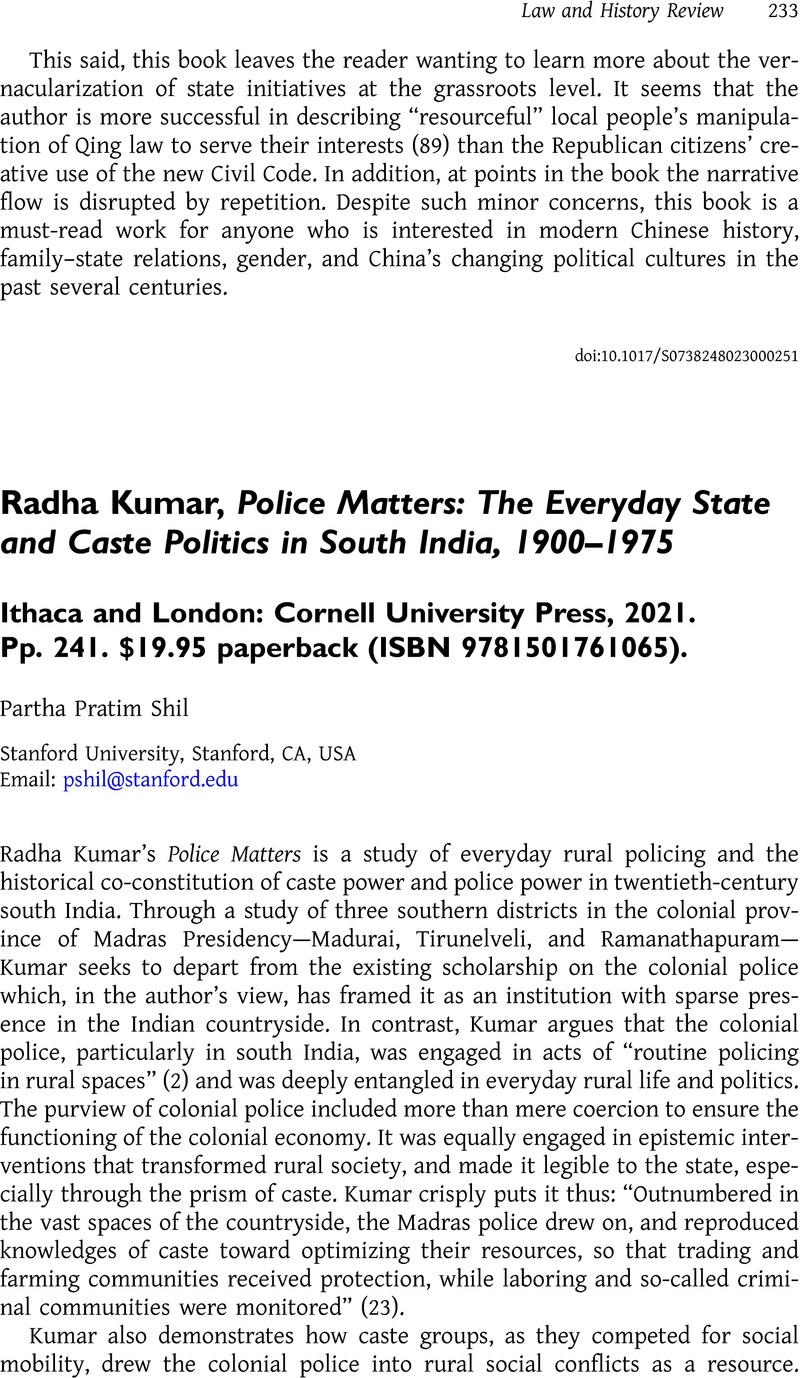No CrossRef data available.
Article contents
Radha Kumar, Police Matters: The Everyday State and Caste Politics in South India, 1900–1975 Ithaca and London: Cornell University Press, 2021. Pp. 241. $19.95 paperback (ISBN 9781501761065).
Review products
Radha Kumar, Police Matters: The Everyday State and Caste Politics in South India, 1900–1975 Ithaca and London: Cornell University Press, 2021. Pp. 241. $19.95 paperback (ISBN 9781501761065).
Published online by Cambridge University Press: 05 May 2023
Abstract
An abstract is not available for this content so a preview has been provided. Please use the Get access link above for information on how to access this content.

- Type
- Book Review
- Information
- Copyright
- Copyright © The Author(s), 2023. Published by Cambridge University Press on behalf of the American Society for Legal History


